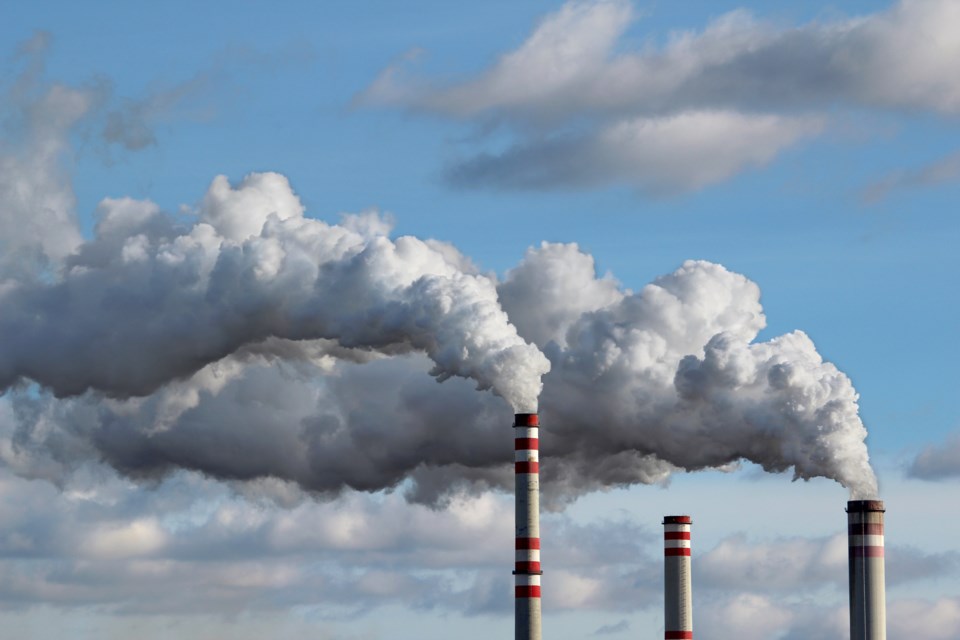The U.S. Environmental Protection Agency is proposing to reclassify the Denver Metro North Front Range area from “serious” to “severe” for ground-level ozone, or smog.
According to the EPA, the reclassification is based on air quality monitoring data from 2018 to 2020, indicating that the region has failed to meet the 2008 and 2015 ozone standards within the timeframes required by the Clean Air Act. The eight-county region includes Boulder County and Longmont.
Ground-level ozone is a pollutant formed when heat and sunlight allow the reaction of chemicals found in industrial plants, vehicle exhaust, wildfire smoke and oil and gas extraction. Ozone pollution increases the risk for asthma, pneumonia, cardiovascular damage and other breathing issues.
Compliance for national air quality standards is calculated based on the three-year rolling average of the fourth highest maximum annual concentrations in a geographic area, which was 81 parts per billion for the Denver Metro North Front Range area. The 2008 ozone standard calls for 75 ppb and the 2015 standard is 70 ppb.
Longmont tracks days out of ozone compliance above 70 ppb at two locations, Boulder Reservoir and Rocky Mountain Flats. In 2021, the Boulder Reservoir saw 32 days out of compliance and the Rocky Mountain Flats saw 52.
Reclassification would require the state to apply more stringent air quality measures to sources across the region. This includes a requirement to use reformulated gasoline in summer months.
If approved, local gas stations would be required to sell cleaner-burning gasoline in the summer, likely beginning in 2024. Studies have found this type of gasoline improves air quality, but it also is more expensive.
The regulation change would also result in stricter regulations on industries deemed to be major sources of ozone-forming pollution. The Colorado Department of Public Health and Environment determines which industrial facilities would be impacted by the stricter regulations.
“Ground-level ozone remains one of the most challenging public health concerns we face, affecting large numbers of Coloradans and their families,” EPA Regional Administrator KC Becker said in a release. “EPA’s proposed Clean Air Act reclassification for the Denver and North Front Range will make sure we are leveraging all available measures and resources as we move forward to reduce ozone pollution…”
The Clean Air Act requires that states implement additional measures to protect public health and submit new plans to demonstrate how the area will attain improvements as quickly as possible.
Rigo Leal, Longmont public information officer, explained that because of the regional nature of ozone as a pollutant, unhealthy ozone levels in another city means it will also be high in Longmont.
“The City of Longmont is doing its part to decrease the release of ozone-forming pollutants within the city,” he said in an email. “Lowering the ozone levels along the Front Range will require a regional effort.”
Some of those local efforts include the city using regulations and legal agreements to stop oil and gas development within city limits, with the last active oil and gas well pad in Longmont closing in July 2021, Leal said.
He also pointed to Longmont Ride Free, which provides free rides on local Longmont bus services, and some of the city’s major investments to make transit, bicycling and walking easier and more convenient choices for the public.
Longmont funds its own research-grade air quality program and shares the data with scientists and regulators, which Leal said has helped to shine a light on local air quality impacts and improve scientific understanding of how ozone forms in the area. That data is viewable to the public at www.bouldair.com/longmont.htm.
“The city has engaged in state and federal rulemakings regulating these pollutants, both directly and through our membership with Colorado Communities for Climate Action,” Leal said. “The city advocates regulations that minimize the release of harmful pollutants.”
He added that Longmont is also a member of Colorado’s Regional Air Monitoring and Messaging group, which is working to improve the quality and consistency of air quality information provided to the public. Other regional efforts are underway to develop an electric vehicle plan and work on code updates for environmentally friendly initiatives.



